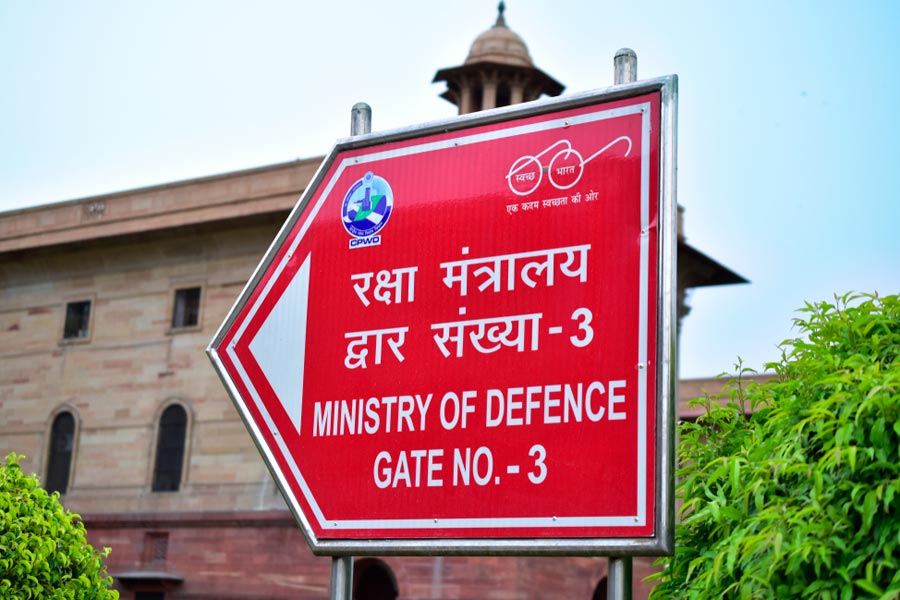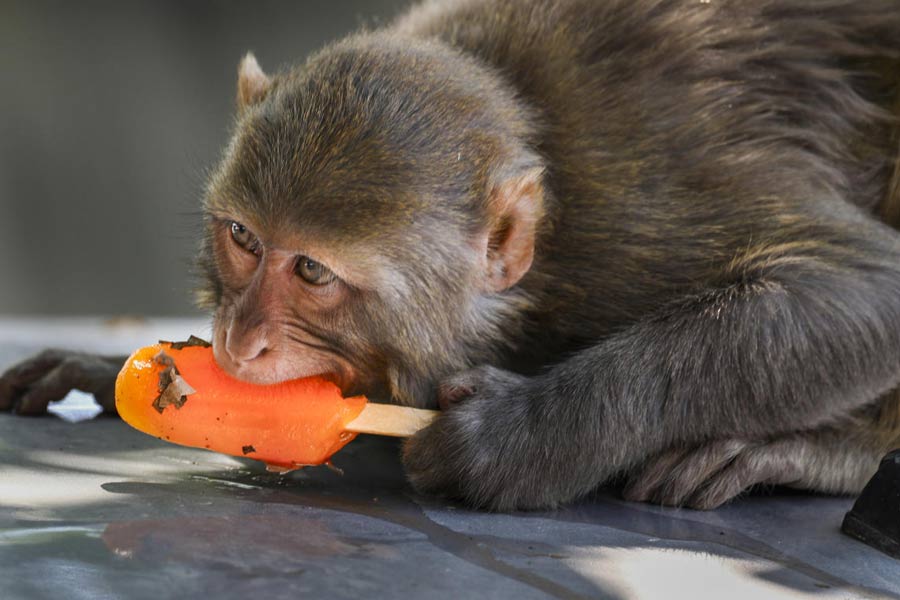 |
 |
| Three artificial vultures (bottom) are perched on top of a billboard advertising an exhibition on death outside the Australian Museum in Sydney. Though the exhibition was a journey on death down the ages, the writing on the board is apt for the diminishing vulture population. A Griffon vulture (top) on a solitary flight looks for company. |
Chaibasa, Oct. 8: Vultures, which once flew high in Saranda forest and Chaibasa, are fast disappearing.
According to divisional forest officer, Saranda, H.S. Gupta the dwindling number of these birds poses an environment hazard.
“The vulture population has drastically decreased over the past couple of years. The birds seem to have moved away. They are now seen at Karaikela, around 35 km away from the district headquarters,” Gupta said.
According to him, the fall in vulture numbers may create environment imbalance. “Vultures play a major role in the food chain. In the absence of these scavengers, disposal of animal carcass becomes a huge problem,” Gupta said.
“White-backed vultures or White Scavenger vultures — found in Saranda and Chaibasa — is the most common scavenger in India. But it is unforrtunate that these birds are rarely seen,” he added.
The divisional forest officer said either local migration or death could be the reason for the disappearance of the scavengers.
“Chemicals used by farmers in pesticides and insecticides may have affected the birds,” Gupta said.
“The excessive use of chemicals in recent times has had an adverse effect on the lifecycle of all birds. And vultures are no exception. New-born birds are weak and do not have a protective cover to survive,” he said.
Mining in the southern part of West Singhbhum has also affected the habitat of vultures. “Pollution has affected the habitat too,” Gupta added.
R.K. Sahai, retired technical employee of the state tassar department, Pilot Project Centre, Chaibasa, had another explanation for the fall in the number of vultures.
According to him, West Singhbhum is a tassar-cultivation zone. “Tribal tassar cultivators used to poison crows which fed on silkworm pupa. Vultures which scavenged on the dead crows also got poisoned,” Sahai said.
Chunni Lal of Shamshan Kali, the favourite haunt of vultures, said: “There was a time when innumerable vultures could be seen here — waiting to feed on the carcass dumped near the temple here… But since last year not a single one has been spotted. It is alarming and its high time we did something about it.”
Sailesh Kumar of Chaibasa, said a few years ago, thousands of vultures perished after scavenging an infected corpse. They contracted the disease and were found hanging from their perches atop trees upside down.
Since then the remaining population of the carrion-eaters fled the city and never returned.











